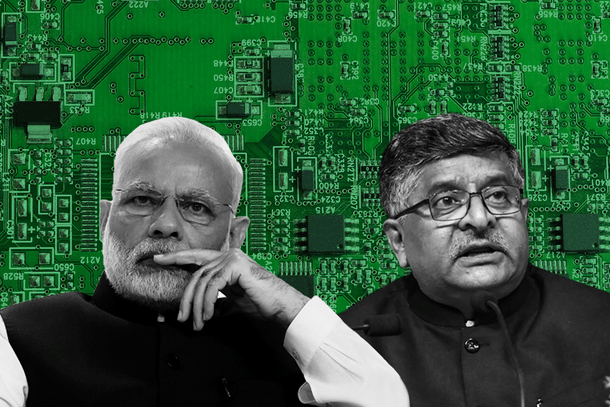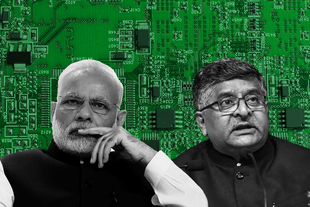Ideas
This Report Of An India-Israel Forum Had Specific And Practical Recommendations For #FabInIndia: Here Are The Highlights
Swarajya Staff
Aug 12, 2020, 02:01 PM | Updated 02:00 PM IST
Save & read from anywhere!
Bookmark stories for easy access on any device or the Swarajya app.


An Indo-Israel study had suggested 45nm/65nm foundry as a starting point for #FabInIndia: $0.9 billion subsidy and $1.1 billion interest free loan were sought.
A 5 August news report said that "China introduces new policies to support integrated circuit industry".
An analysis in CNBC following China's measures said, “analysts have cast doubt over whether the policies will have a major impact in helping China’s chip industry". However, one must note that the analysis is with respect to China's possibility of becoming a global player in semiconductor chip (IC) manufacturing, where currently it is at a near 5 per cent.
China has set an ambitious target by 2025 of producing in-house 70 per cent of what it consumes where currently it is at a likely 20 per cent.
For India, on the other hand, it is about going from near 0 per cent to maybe 10 per cent by 2025 in terms of manufacturing the chips that it needs and hopefully scaling further from there and starting to show up on the global map.
To get the start in India for commercial semiconductor fabs or foundries, some amount of government hand holding will be needed. While we continue to look forward to when the government of India may finalise and announce its new wafer or chip fab policy and incentives, here is some bit of information from an event that occurred eight months back.
A report of The 12th India Israel Forum held in Tel Aviv 16-17 December 2019 under the auspices of "Ananta Center", a "nonpartisan trust that works to create a strong and open society through ethical leadership and constructive dialogues" can be accessed at here. Some excerpts from the report which are relevant for the possibility of a semiconductor chip (IC) manufacturing #FabInIndia are being reproduced here for readers and for relevant people to act upon.
As a background to the effort, the December 2019 report mentions the following:
In the 2018 meeting of the India Israel Forum, an expert group meeting of semiconductors was organized. As a follow up to it, a core group, consisting of members from both India and Israel, was formed to evaluate the feasibility of setting up a semi-conductor fabrication facility in India.
Ambassador Ron Malka, Ambassador of Israel to India, and Ambassador Sanjeev Singla, Ambassador of India to Israel, officially released the report of this group, titled “Feasibility Study of a Semiconductor Fabrication Facility in India”. The report has been shared with both the Ambassadors and Professor K Vijay Raghavan, Principal Scientific Advisor, Government of India.
Now from the "key findings and recommendations" section, to begin with the why of it as well as the benefits of having a full-fledged commercial #FabInIndia:
The report projected that India’s total semiconductor consumption in 2025 may be US$40-50 Bn. If this consumption continues to be fulfilled through imports, chips can soon become an extremely large import item for India.
Additionally, establishing a domestic fab industry may also be of strategic benefit as it builds the nation’s capabilities in an important technology of the future... A domestic fabrication industry could also support the Government’s objective of developing an IoT ecosystem in India, under the vision of Digital India.
A local semiconductor manufacturing industry may support the development and manufacturing of sensors, especially in the domains of agriculture, healthcare, smart cities, safety and waste management, required for India specific IoT products envisaged in MeitY’s draft 2016 policy on IoT.
While establishing the industry requires significant government support, over a longer-term it is likely to pay back with a multiplying economic impact and development of a high-tech ecosystem in the country.
On the ‘what’ and ‘how’ to get a #FabInIndia started, the report has the following recommendations (bold emphasis is mine):
An analogue and mixed-signal foundry at a technology node of 45/65 nm, could be a starting point for India to develop a semiconductor fabrication industry. Israel as a technology partner could transfer the initial technology, provide support to set-up the fab and support early market development.
The report has the following to say on what kind of impact it could have on the electronics imports of India and on the Indian economy in general:
The Forum assesses the proposed fab may offset semiconductor imports of US$ 8 billion over the projection period and may have a further multiplier impact of US$ 15 billion on the Indian economy.
So what should the government of India and investors do to help get this going? The report has very specific recommendations and suggested numbers:
Monetary and non-monetary support will be needed from the Government of India, to attract investment in the proposed India fab. As per the financial model in the report, a cash subsidy of US$ 912 Mn on capex and an interest-free loan of US$ 1,089 Mn, could help achieve 15% equity IRR, the likely threshold for corporate investors.
The government should also provide all necessary support in terms of connectivity, infrastructure, preferential market access, etc.
Need to have a steady financial private partner to set up a Fab. The private partner could have equity to ensure that there is a responsible stakeholder.
The recommendations from the report on “Feasibility Study of a Semiconductor Fabrication Facility in India” needs to be taken up at the next level and a consortium could be built around it. India can work with Israel to create a roadmap towards its implementation.
The report often quotes from what appears to be a detailed "Feasibility Study of a Semiconductor Fabrication Facility in India" . It is not clear if the study is or will be available in the public domain and more importantly if it will be acted upon. Previous articles in Swarajya also independently concurred with many of the above recommendations.
Swarajya has a dedicated issue on the topic of a possible upcoming "silicon revolution" in India for which indeed #FabInIndia is the key. The issue has a detailed interview with minister Ravishankar Prasad where he confirmed that a new policy for semiconductor fabs in India is in the making.
The hope is that the Narendra Modi government, which has so far been able to address many long pending matters, can soon help #FabInIndia take off as well.





